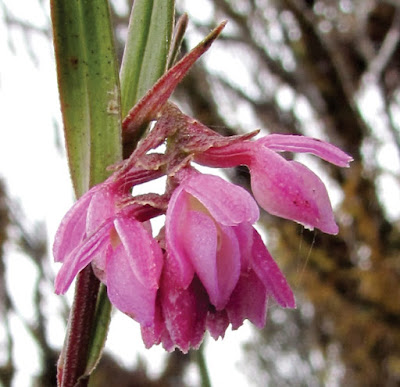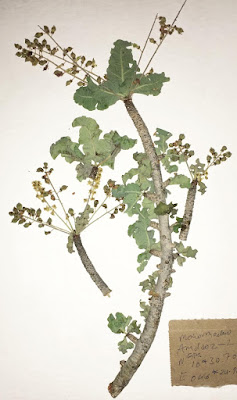[Most Recent Entries] [Calendar View]
Friday, March 1st, 2019
| Time | Event | ||||
| 2:27a | [Entomology • 2019] Notes on A Small Collection of Phaneropterine Bush-crickets (Orthoptera: Tettigonioidea) from Central and Southern Madagascar with the Description of Two New Species
Abstract During a joint ecological project of the Institute of Forest Ecology, Slovak Academy of Sciences, Zvolen, Slovakia, and the University of Antananarivo, Madagascar, eight species (10 specimens) of phaneropterine bush-crickets were collected. Among them, two species were found as new to science (Mimoscudderia longicaudata n. sp., Paraphyrrhicia leuca n. sp.) and are described in this paper. Two other species (Plangia segonoides, Trigonocorypha maxima) were found the first time after their description more than 100 years ago. We provide first detailed data about their localities and habitat. Keywords: Orthoptera, biogeography, new species, Eurycorypha prasinata, Xenodoxus, Phaneroptera, Tylopsis Klaus-Gerhard Heller, Claudia Hemp, Bruno Massa, Jacques Rakotondranary and Anton Krištín. 2019. Notes on A Small Collection of Phaneropterine Bush-crickets (Insecta: Orthoptera: Tettigonioidea) from Central and Southern Madagascar with the Description of Two New Species. Zootaxa. 4563(2); 297–310. DOI: 10.11646/zootaxa.4563.2.4 | ||||
| 2:47a | [Botany • 2019] Epidendrum choccei (Orchidaceae) • A New Species from Northern Peru
Abstract Epidendrum choccei, new species of Orchidaceae, from Northern Peru is here described, illustrated and compared with most similar species. Keywords: Paramo, Andes, Frutex Group, Leptanthum Subgroup, endemic, Monocots Margoth Acuña-Tarazona, Eric Hágsater and Elizabeth Santiago Ayala. 2019. Epidendrum choccei (Orchidaceae), A New Species from Northern Peru. Phytotaxa. 394(1); 98–104. DOI: 10.11646/phytotaxa.394.1.7 Eric Hágsater and Elizabeth Santiago. 2018. (eds.), The Genus Epidendrum, Part 12, Icones Orchidacearum. 16(2); 1668-1700. México: Instituto Chinoin, A. C. herbarioamo.org/index_archivos/Fascicle1 Orchid Species Discovered at Inkaterra Machu Picchu Pueblo Hotel australia.etbtravelnews.global/376755/or | ||||
| 8:54a | [Botany • 2019] Boswellia occulta (Burseraceae) • A New Species of Frankincense Tree from Somalia (Somaliland)
Abstract The new species Boswellia occulta is described from a small area in the Ceel Afweyn District of Somaliland (northwestern Somalia), where it is locally of considerable socio-economic importance. Although used for frankincense production by many generations of local harvesters, it has been unknown to science until now. Apart from the recently collected type material, it is also known from a sterile and hitherto misunderstood collection made in 1945. The simple-leaved Boswellia occulta is morphologically compared with B. sacra and B. frereana, the two major frankincense-producing species in the region, both with imparipinnate leaves, and it appears to be most closely related to B. sacra. The new species is the only simple-leaved species of Boswellia known outside Socotra. Keywords: Boswellia, frankincense, taxonomy, Somaliland, Eudicots
Boswellia occulta Thulin, DeCarlo & S.P.Johnson sp. nov. Boswellia occulta differs from B. frereana by its flowers with white (vs reddish or greenish red) petals and tubular (vs flattened) disk, and fruits with 4–5 [vs (5–)6(–8)] locules; and from B. sacra by its glabrous (vs ± densely pubescent) leaves with mostly strongly undulate-sinuate (vs crenate to subentire) margins, and unwinged pyrenes (vs pyrenes often more or less surrounded by a persistent wing); and from both B. frereana and B. sacra by its simple (vs imparipinnate) leaves. ... Distribution and habitat:— Boswellia occulta is only known from a small area in northwestern Somalia (Somaliland) (Fig. 4), where it is locally common and the dominant tree on west-facing arid hillsides on limestone at 400–500 m elevation. The tree usually grows directly on limestone cliffs and boulders, and then has a more or less swollen disk-shaped base of the trunk (Fig. 2B). More detailed studies of the extent of the range of the species and the numbers and densities of the trees and their regeneration are planned in the near future. Etymology:— The epithet “occulta” (from Latin “occultus”, hidden) refers to the history of this species that, although used for frankincense production by many generations of local harvesters, has been unknown to science until now. Vernacular name and uses:— Mohor madow (Somali, fide Glover & Gilliland 719 and Ahmed Mohamed Dhunkaal s.n.); this is the vernacular name generally used also for B. sacra in Somalia. However, the harvesters in the B. occulta area distinguish between B. occulta (“mohor madow”) and B. sacra (“mohor cad”, “mohor dadbeed” or “mohor lab”). Frankincense produced from B. occulta (Fig. 2D) has unique properties (DeCarlo, unpublished research data) and is important in the local economy Mats Thulin, Anjanette DeCarlo and Stephen P. Johnson. 2019. Boswellia occulta (Burseraceae), A New Species of Frankincense Tree from Somalia (Somaliland). Phytotaxa. 394(3); 219–224. DOI: 10.11646/phytotaxa.394.3.3 |
| << Previous Day |
2019/03/01 [Calendar] |
Next Day >> |









